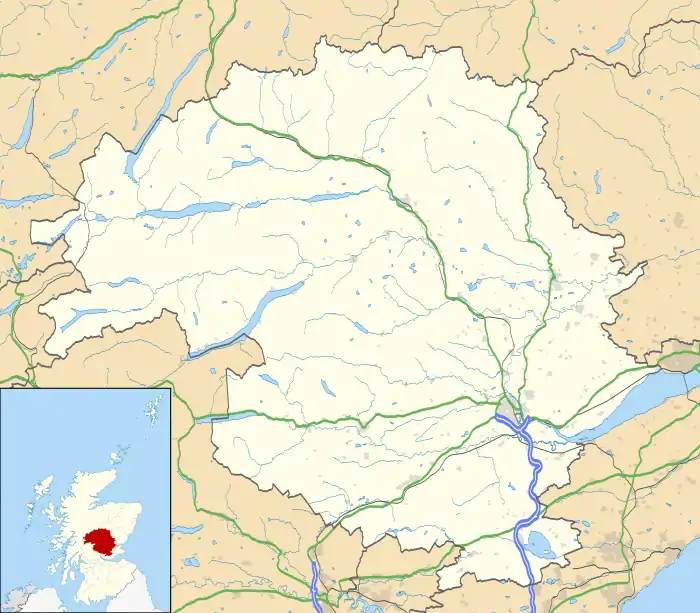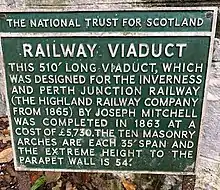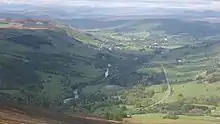Killiecrankie
Killiecrankie (/ˌkɪliːˈkræŋkiː/ ⓘ; (Scottish Gaelic: Coille Chreithnich, meaning aspen wood) is a village in Perth and Kinross, Scotland on the River Garry. It lies at the Pass of Killiecrankie, by the A9 road which has been bypassed since 1986.[1] The village is home to a power station forming part of the Tummel Hydro-Electric Power Scheme. Much of the riverbank is owned by the National Trust for Scotland. The nearby 10 arch railway viaduct, which runs for 109 yards (100 m) along the north-east bank of the River Garry,[2] was built in 1863 from a design by Joseph Mitchell.
Killiecrankie
| |
|---|---|
 Killiecrankie | |
 Killiecrankie Location within Perth and Kinross | |
| OS grid reference | NN913628 |
| Civil parish | |
| Council area | |
| Country | Scotland |
| Sovereign state | United Kingdom |
| Police | Scotland |
| Fire | Scottish |
| Ambulance | Scottish |
| UK Parliament | |
| Scottish Parliament | |

History
In 1689, during the Jacobite Rebellion, the Battle of Killiecrankie was fought on the northern edge of the village. The Highland charge of the Jacobites took the government forces under General Hugh MacKay by surprise and completely overwhelmed them in only 10 minutes. Donald MacBean, one of William II of Scotland's supporters, having lost the contest, is said to have cleared the pass, from one bank to the other, at "The Soldier's Leap". One of the most famous leaders of the rebellion John Graham of Claverhouse, Viscount Dundee was killed in the battle. A Memorial Field to the fallen soldiers lies within the grounds of the category B listed Urrard House.[3] An eponymous folk song, Braes o' Killiecrankie, commemorates the battle. A 1966 recording by The Corries was a pioneering use of the music video.


According to official records, the last wolf in Great Britain was killed near Killiecrankie in 1680.[4]
Television
Mary Ann Kennedy was the presenter of a BBC Four television series The Highland Sessions, which was filmed in Killiecrankie. Many notable musicians and singers from Ireland and Scotland performed in the sessions.[5]
References

- Ordnance Survey, Great Britain (2008), "Braemar and Blair Atholl", Ordnance Survey Landranger Map (C2 ed.), ISBN 978-0-319-23119-7
- Byrom, Bernard (2022). Old Blair Atholl, Killiecrankie and Struan. Catrine: Stenlake Publishing Ltd. p. 6. ISBN 978-1-84033-929-1.
- "Urrard House". Historic Scotland. Retrieved 24 July 2013.
- Shoberl, Frederic (1834). Natural History of Quadrupeds. J. Harris.
- "The Highland Sessions". All Celtic Music. Retrieved 17 December 2010.
External links
- Chisholm, Hugh, ed. (1911). . Encyclopædia Britannica. Vol. 15 (11th ed.). Cambridge University Press. p. 795.